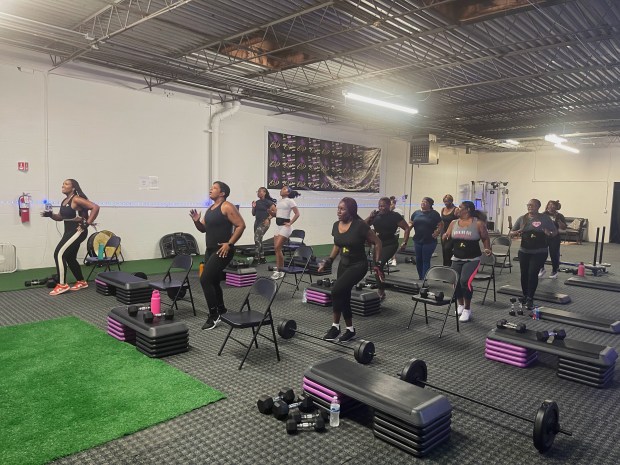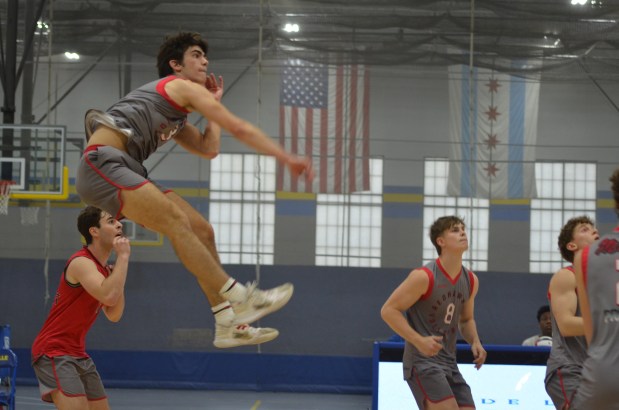The city of Evanston approved a study on high blood pressure, noting a 13-year life expectancy gap exists between the city’s most vulnerable and least vulnerable residents.
The study would last for a year, and its goal is to reduce the blood pressure of its participants by 10 to 15 points and overall improve their quality of life, the program’s organizer, Neticia Waldron, said.
Waldron, a healthcare administrator, fitness instructor and owner of Whole Women Fitness, presented her pilot program Pathway to Wellness to the Evanston City Council at its meeting on last week. The program will partner with two city departments, Erie Health and RUSH University Medical Center, and is looking for local partners who can provide fresh, locally grown vegetables from community gardens. The study will need 150 participants selected based on where they live, their income and their hypertension, or high blood pressure, diagnosis.
Evanston residents will be able to apply for the program in January 2025, Waldron told Pioneer Press, and participants will be chosen based on three criteria. They are that an applicant lives in the census tracts of 8092, 8096 (which makes up a large part of Evanston’s Fifth Ward) and 8102 (an eastern portion of Evanston’s Eighth Ward), that the participant has an income at or below 250% of the federal poverty line and that the participant be diagnosed with hypertension. Applicants don’t need to fit into every criterion to be admitted into the study, but preference will be given to those who fit within those three criteria.
Both men and women are welcome to apply and participate, Waldron said.
The study will divide the 150 participants into two groups of 75 people, one being a control group and the other an intervention group. All participants will measure their blood pressure with a 4G internet-connected blood pressure cuff two to five times a week, depending on their hypertension severity, Waldron said. The data will be analyzed by Dr. Elizabeth B. Lynch, Director of Community Health in the Department of Family and Preventative Medicine and co-lead of the research arm of the Rush BMO Institute for Health Equity.
Waldron said the control group will have access to the blood pressure cuff and food stipends for healthy foods. In addition to the control group’s amenities, the intervention group will have access to fitness classes at Whole Women Fitness, nutrition and meal prep classes, and advice when shopping at grocery stores and eating out at restaurants. The control group’s participants will also be placed in a support group overseen by a health coach, supplied by Whole Women Fitness, and a pharmacist will also assist in making sure that alterations to participants’ medication are balanced. Waldron said the intention is to create a substantive, well-rounded approach so that the participants can learn how to care for themselves and others in their support group.
Waldron said the goal of the intervention group is for the participants’ blood pressure to drop between 10 and 15 points. The participants will also fill out surveys to measure their satisfaction of life score, with the goal of the study to raise their score. Evanston studies have found that the geographic area the intended participants live in have higher rates of depression, she said.
In 2022, the city released its Evanston Project for the Local Assessment of Needs (EPLAN), an assessment done by the city and local leaders to identify health priorities in Evanston and determine the best interventions to improve the health and well-being of Evanston residents, according to the city’s website. The study found that residents who live in previously redlined areas of Evanston are still being negatively affected by the legacy of redlining. The life expectancy of the 8092 census tract was 13.3 years shorter than the highest life expectancy for the 8088 census tract, which is directly north of it.
According to a memo written by Evanston’s Director of Health and Human Services Department Ike Ogbo, the criteria for the participants to live in the 8092 census tract is because one-third of residents in that census tract have been diagnosed with hypertension, which is significantly higher than the Evanston average. The poverty rate for Black and Hispanic/Latino residents is at 18% and 19%, respectively, which is higher than Evanston’s overall poverty rate of 11%.
“We are all minorities according to this country’s standard, and so we are impacted. It is costing our loved ones to die prematurely,” Waldron said. “My mother was only 62 years old (when she died of a heart attack). And the upsetting part about it, is that redlining is intentional. It’s built into government policy. It’s intentional harm. And somebody has to answer for that, but it’s something that people aren’t necessarily paying attention to,” she said.
“There are policies in place that advance one race of people over, or one social economic status of people, and Black and brown people get what’s left. They keep us out of certain opportunities that lead to longer life, wealth and good health,” she said.
Waldron said the results of the EPLAN study, and having family members who have died of heart attacks, including both her grandmothers and her mother, are what motivated her to start a program to monitor chronic illnesses and to also educate the residents of 8092.
She presented a similar program focusing on hypertension, diabetes, obesity and asthma to the city council in August 2022, but the study then was proposed for two years and would have cost $1.5 million. It ultimately was not approved by the city council.
The goals of the pilot program include having it continue, and for results of the study to be peer reviewed and also influence municipalities across the country to do similar studies, Waldron said. Funding for it, however, may be a challenge. The $400,000 program is funded by the American Rescue Plan Act, which gave municipalities across the country a one-time cash infusion from the federal government for relief during the COVID-19 pandemic.
“I think the worst outcome would be that this proves successful and there’s no plan for funding it on an ongoing basis,” Council Member Tom Suffredin of the 6th Ward said.





